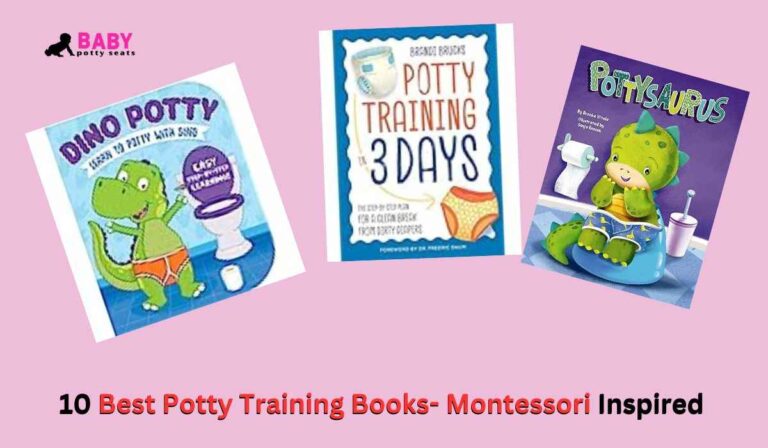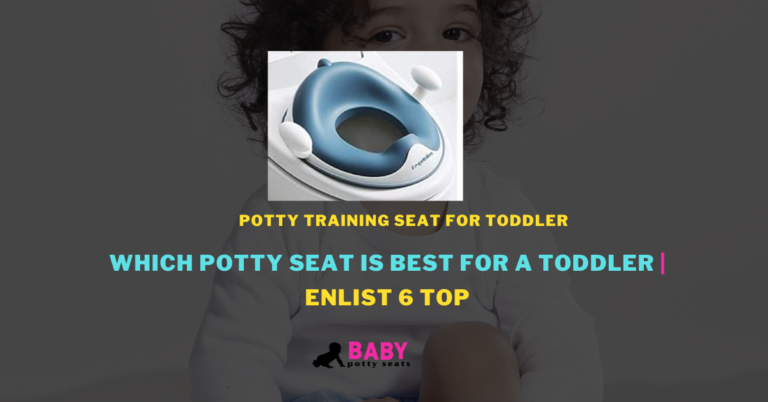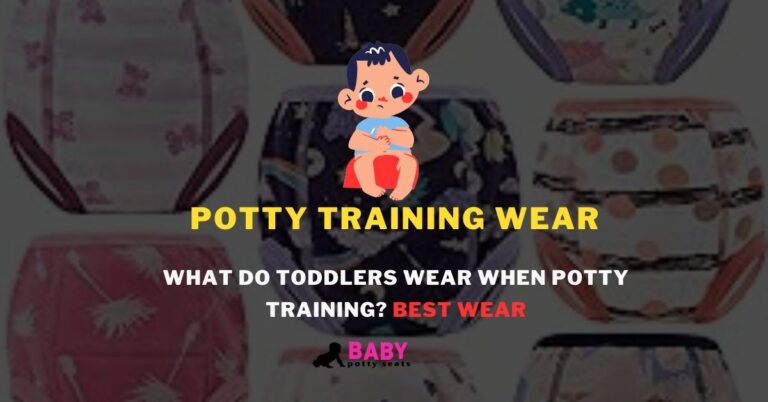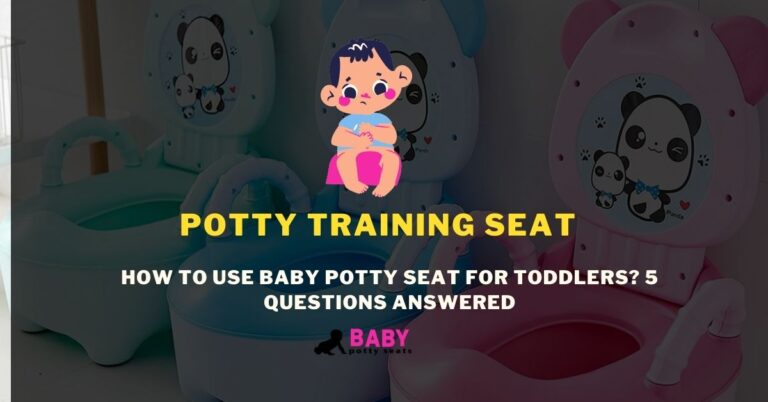A crucial turning point in any toddler’s life is learning to use the potty. However, balancing the rigors of potty training with a full-time job can be especially difficult for working parents.
Maintaining consistency, patience, and focus during the process can be challenging when along with professional obligations. This post offers working parents a thorough how-to on potty training a toddler while they work a full-time job, along with helpful tips to make the process go more smoothly.
Potty training when both parents are working
The following is a step-by-step guide that helps parents in how to potty train a toddler while full time working.
1. Preparing for Potty Training
Signs Your Toddler Is Ready
Make sure your kid is ready to go potty before starting the training process. These indicators include the ability to follow basic directions, demonstrating interest in using the restroom, and being dry for extended periods.
Gathering Necessary Supplies
Stock up on necessities such as training pants, wipes, an easy-to-remove outfit, and a potty for a toddler. You and your child will find the training process more convenient if you have these supplies on hand.
Related Article: 10 Best waterproof training pants for toddlers in 2024
2. Setting a Routine
Importance of Consistency
The secret to potty training is consistency. Make sure your regimen fits within your work schedule and follow it. Having a routine will assist your toddler in understanding when it’s time to use the potty, whether it’s before work, in the evenings, or on the weekends.
Creating a Schedule
Together with your youngster, establish a schedule that includes frequent bathroom breaks, ideally right before or right after meals. If your child goes to daycare, make arrangements with the staff to keep the routine going while you’re at work.
Communicating with Caregivers
Make sure the person caring for your child or the childcare center supports your toilet training strategy. Sustaining uniformity in disparate contexts requires effective communication.
3. Using Positive Reinforcement
Why Positive Reinforcement Works
When potty training your toddler, one of the best ways to support them is through positive reinforcement. Acknowledgment and incentives make children feel good about themselves and encourage them to keep using the restroom.
Ideas for Rewards and Praise
To reward positive behavior, think about giving stickers, more playtime, or verbal praise. Make sure your child receives consistent but manageable rewards so they can feel proud of themselves without feeling under too much strain.
Related Article: Top 10 Best Toilet Training Seat with Ladder-2024
4. Managing Potty Training While Working
Balancing Work and Parenting
Finding a balance between potty training and work might be challenging, but it is achievable. You may successfully include potty training into your daily life without feeling overwhelmed by creating a clear plan and routine.
Weekend Intensive Training
Take advantage of the weekends to devote additional time to potty training. Without job interruptions, you may set up time to assist your toddler in learning good toilet habits.
Potty Training Apps and Tools
Use toilet training applications that can remind you to potty train your child or measure their progress. These resources can be especially beneficial for working parents as they offer direction and support all along the way.
5. Handling Accidents Gracefully
Preparing for Setbacks
Mishaps are a common occurrence during potty training. Above everything, exercise patience. Have extra clothing and cleaning supplies on hand. Refrain from showing your toddler your frustration as this could discourage them.
Staying Calm and Supportive
Reassure your child that accidents are acceptable. Remain composed, assist with tidying up, and remind them to use the restroom the next time. Enhancement rather than Punishment yields superior outcomes.
6. Communicating with Caregivers
Ensuring Consistency Across Different Environments
The secret to successful potty training is consistency. Verify that the caretakers or daycare providers are using the same schedule and techniques as you do at home. This keeps your child from becoming confused and guarantees a more seamless transition between situations.
Tips for Communicating with Daycare or Babysitters
Give your child explicit instructions and acknowledge any cues they use to ask to go. Caregivers will better grasp your toddler’s needs and progress if you communicate with them on a regular basis.
7. Using Tools Like Pull-Ups
Transitioning from Diapers to Pull-Ups
A fantastic transitional product between diapers and underwear is a pull-up. They offer the security of diaper-like protection together with the freedom for your toddler to practice potty training.
When to Switch to Regular Underwear
You can start the process of moving your child from pull-ups to regular underwear if they demonstrate continuous success with them. This stage represents a significant turning point in their potty training process.
8. Incorporating Potty Training Into Your Daily Routine
Morning Routine Strategies
Include going to the bathroom in your daily schedule. To assist your child develop a habit for the remainder of the day, encourage them to use the potty as soon as they wake up.
Evening Potty Training Sessions
Make using the potty a part of your toddler’s bedtime ritual by including it into your routine. Maintaining consistency at night is as crucial to daytime behavior.
9. Weekend Potty Training Intensives
Focusing on Intensive Training During Free Days
Use the weekends to focus on potty training because they offer more time and flexibility. Give your toddler lots of chances to use the potty so they can develop a habit and confidence.
Making the Most of Weekends
Make the weekends fun while keeping them focused on potty training. Use games, songs, and praise to encourage your child throughout the day.
10. Adjusting Your Strategy Based on Progress
Signs of Readiness for Full-Time Underwear
Once your child begins staying dry consistently and showing independence, it may be time to switch to full-time underwear. Celebrate this transition as a big achievement.
Modifying the Approach for Regressions
Don’t give up if your toddler exhibits regressions. As they learn more, modify your approach, reward good conduct, and exercise patience.
11. Common Challenges and Solutions
Toddler Refusing to Sit on the Potty
If your child won’t sit on the potty, consider using toys, books, or music to make the experience enjoyable. Overcoming resistance can be aided by non-coercive encouragement.
Dealing with Fear or Resistance
A toddler’s fear of using the potty could exist. Calmly address these anxieties by assuring them that using the toilet is safe and that it’s a normal part of growing up.
12. Expert Tips for Working Parents
Advice from Pediatricians
Pediatricians often recommend patience and positive reinforcement as key components of successful potty training. They also suggest not rushing the process, as every child is unique.
Insights from Experienced Parents
Parents who have gone through the potty training process frequently suggest emphasizing advancement rather than perfection. Remain adaptable and acknowledge little victories.
13. Maintaining Patience and Positivity
How to Stay Calm During Setbacks
Potty training can be frustrating, but staying calm is essential. Take breaks if necessary and remind yourself that your child will eventually succeed.
Encouraging Your Toddler Through the Process
Relentlessly provide your kid positive reinforcement, letting them know they’re doing a fantastic job. Your upbeat demeanor will give them greater self-assurance.
Conclusion
Potty training while managing a full-time job is challenging, but with consistency, patience, and a positive attitude, you can help your toddler succeed. Remain mindful of the strides kids make and never forget to recognize and appreciate each accomplishment, no matter how tiny. Your child will eventually attain this significant milestone, and the procedure will seem more doable.








